-
 Bitcoin
Bitcoin $104,726.7569
1.64% -
 Ethereum
Ethereum $2,498.7221
-2.84% -
 Tether USDt
Tether USDt $1.0006
0.04% -
 XRP
XRP $2.1735
0.55% -
 BNB
BNB $646.1374
-0.92% -
 Solana
Solana $149.9892
0.67% -
 USDC
USDC $0.9998
-0.02% -
 Dogecoin
Dogecoin $0.1795
0.23% -
 TRON
TRON $0.2773
1.50% -
 Cardano
Cardano $0.6656
0.97% -
 Hyperliquid
Hyperliquid $34.2378
1.08% -
 Sui
Sui $3.1670
3.57% -
 Chainlink
Chainlink $13.5178
0.00% -
 UNUS SED LEO
UNUS SED LEO $9.0231
2.03% -
 Avalanche
Avalanche $19.5829
-0.30% -
 Stellar
Stellar $0.2642
0.86% -
 Bitcoin Cash
Bitcoin Cash $396.9586
-0.12% -
 Toncoin
Toncoin $3.1464
-1.41% -
 Shiba Inu
Shiba Inu $0.0...01251
-0.40% -
 Hedera
Hedera $0.1656
0.67% -
 Litecoin
Litecoin $86.6370
0.15% -
 Polkadot
Polkadot $3.9270
-0.85% -
 Monero
Monero $323.6381
2.68% -
 Ethena USDe
Ethena USDe $1.0013
0.05% -
 Bitget Token
Bitget Token $4.6330
0.97% -
 Dai
Dai $0.9998
0.01% -
 Pepe
Pepe $0.0...01110
-1.90% -
 Pi
Pi $0.6228
0.49% -
 Aave
Aave $252.7413
-0.44% -
 Uniswap
Uniswap $6.0759
-1.66%
What is the best way to set the MACD indicator parameters? What is the difference between short-term and medium- and long-term parameters?
MACD settings can be adjusted for different trading strategies: short-term (5, 13, 8), medium-term (12, 26, 9), and long-term (24, 52, 18) to capture various trend durations.
May 23, 2025 at 11:08 am
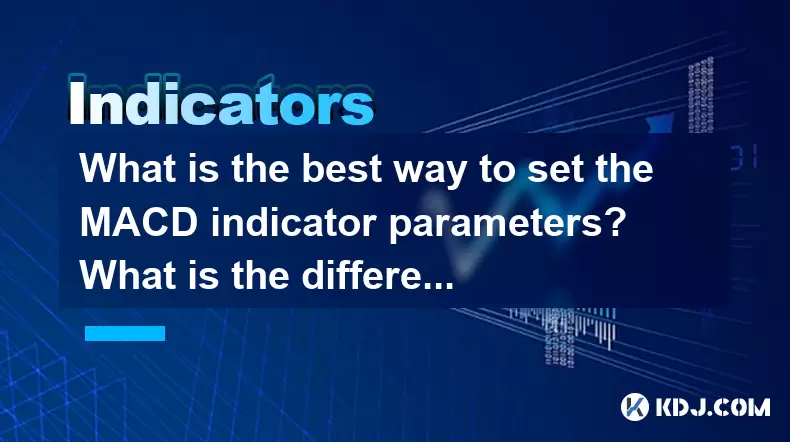
The Moving Average Convergence Divergence (MACD) is a widely used technical indicator in the cryptocurrency trading community. It helps traders identify potential buy and sell signals through the analysis of moving averages. Setting the right parameters for the MACD can significantly impact the effectiveness of your trading strategy. In this article, we will explore the best ways to set MACD indicator parameters and discuss the differences between short-term, medium-term, and long-term settings.
Understanding MACD Basics
Before delving into the specifics of setting MACD parameters, it's essential to understand the basic components of the MACD indicator. The MACD consists of two lines: the MACD line and the signal line. The MACD line is calculated by subtracting the 26-period exponential moving average (EMA) from the 12-period EMA. The signal line is typically a 9-period EMA of the MACD line. The interaction between these two lines generates trading signals.
Setting MACD Parameters
The standard settings for the MACD are 12, 26, and 9, representing the short-term EMA, the long-term EMA, and the signal line, respectively. However, these settings can be adjusted to suit different trading strategies and timeframes. Here's how to set MACD parameters:
Choose the Right Timeframe: The timeframe you choose for your trading will influence the MACD parameters. For short-term trading, you might use a shorter timeframe, while longer-term trading might require a longer timeframe.
Adjust the Short-Term EMA: The default setting for the short-term EMA is 12. To make the MACD more responsive to price changes, you can decrease this value. For example, setting it to 8 or 10 can help in identifying trends more quickly.
Adjust the Long-Term EMA: The default setting for the long-term EMA is 26. Increasing this value can help filter out short-term fluctuations and focus on longer-term trends. Setting it to 30 or 34 might be beneficial for longer-term trading.
Adjust the Signal Line: The default setting for the signal line is 9. Adjusting this can help fine-tune the sensitivity of the MACD signals. A shorter period, such as 7 or 8, can make the indicator more responsive, while a longer period, like 10 or 11, can help reduce false signals.
Short-Term MACD Parameters
Short-term trading in the cryptocurrency market often involves holding positions for a few hours to a few days. Short-term MACD parameters are designed to be more sensitive to price movements, allowing traders to capitalize on quick market changes. Here are some common short-term MACD settings:
5, 13, 8: This setting uses a 5-period EMA for the short-term, a 13-period EMA for the long-term, and an 8-period EMA for the signal line. These settings are more responsive to price changes and can help identify short-term trends.
8, 21, 5: Another popular setting for short-term trading, this configuration uses an 8-period EMA for the short-term, a 21-period EMA for the long-term, and a 5-period EMA for the signal line. This setup can help traders capture quick market movements.
When using short-term MACD parameters, traders should be aware that the indicator may generate more false signals due to its increased sensitivity. Therefore, it's crucial to combine the MACD with other technical indicators or fundamental analysis to confirm signals.
Medium-Term MACD Parameters
Medium-term trading in the cryptocurrency market typically involves holding positions for a few days to a few weeks. Medium-term MACD parameters aim to balance sensitivity and reliability, making them suitable for traders looking to capitalize on intermediate trends. Here are some common medium-term MACD settings:
12, 26, 9: The standard MACD settings are often used for medium-term trading. These settings provide a good balance between responsiveness and reliability, making them suitable for identifying intermediate trends.
10, 24, 7: This setting uses a 10-period EMA for the short-term, a 24-period EMA for the long-term, and a 7-period EMA for the signal line. These settings can help traders capture medium-term trends while still being responsive to price changes.
When using medium-term MACD parameters, traders should be prepared to hold positions longer than with short-term settings. It's essential to monitor the market closely and adjust your strategy based on the overall trend and market conditions.
Long-Term MACD Parameters
Long-term trading in the cryptocurrency market involves holding positions for weeks to months. Long-term MACD parameters are designed to filter out short-term fluctuations and focus on significant, long-lasting trends. Here are some common long-term MACD settings:
24, 52, 18: This setting uses a 24-period EMA for the short-term, a 52-period EMA for the long-term, and an 18-period EMA for the signal line. These settings are less sensitive to short-term price movements and can help identify long-term trends.
30, 60, 20: Another popular setting for long-term trading, this configuration uses a 30-period EMA for the short-term, a 60-period EMA for the long-term, and a 20-period EMA for the signal line. This setup can help traders focus on significant market trends.
When using long-term MACD parameters, traders should be prepared to hold positions for extended periods. It's crucial to monitor the overall market trend and adjust your strategy based on long-term indicators and fundamental analysis.
Differences Between Short-Term, Medium-Term, and Long-Term Parameters
The main differences between short-term, medium-term, and long-term MACD parameters lie in their sensitivity to price movements and the duration of the trends they aim to capture. Here's a detailed comparison:
Sensitivity: Short-term MACD parameters are the most sensitive to price movements, making them suitable for identifying quick trends. Medium-term parameters balance sensitivity and reliability, while long-term parameters are the least sensitive, focusing on significant, long-lasting trends.
Trend Duration: Short-term parameters are designed to capture trends that last from a few hours to a few days. Medium-term parameters focus on trends that last from a few days to a few weeks, while long-term parameters aim to identify trends that last from weeks to months.
False Signals: Short-term MACD parameters are more likely to generate false signals due to their increased sensitivity. Medium-term parameters have a moderate risk of false signals, while long-term parameters are less likely to generate false signals but may miss short-term opportunities.
Holding Period: Short-term trading with MACD parameters involves holding positions for a short duration, typically a few hours to a few days. Medium-term trading involves holding positions for a few days to a few weeks, while long-term trading involves holding positions for weeks to months.
Practical Example of Setting MACD Parameters
To illustrate how to set MACD parameters in a trading platform, let's use a hypothetical example with a popular trading platform like TradingView. Here's how you can adjust the MACD settings:
Open the TradingView Platform: Log in to your TradingView account and open the chart of the cryptocurrency you want to analyze.
Add the MACD Indicator: Click on the "Indicators" button at the top of the chart, search for "MACD," and add it to the chart.
Access MACD Settings: Once the MACD indicator is added to the chart, click on the settings icon (usually a gear or cog) next to the MACD indicator on the chart.
Adjust the Parameters: In the settings window, you will see the default MACD parameters (12, 26, 9). To adjust these, enter the new values for the short-term EMA, long-term EMA, and signal line. For example, if you want to use short-term settings of 5, 13, 8, enter these values into the respective fields.
Apply the Changes: After entering the new values, click "OK" or "Apply" to update the MACD indicator with your custom settings.
Analyze the Chart: With the new MACD settings applied, you can now analyze the chart to identify potential buy and sell signals based on the interaction between the MACD line and the signal line.
Frequently Asked Questions
Q: Can I use different MACD parameters for different cryptocurrencies?
A: Yes, you can use different MACD parameters for different cryptocurrencies. Each cryptocurrency may have unique price movement patterns, and adjusting the MACD parameters can help you better capture the trends specific to each asset.
Q: How often should I adjust my MACD parameters?
A: The frequency of adjusting your MACD parameters depends on your trading strategy and the market conditions. Some traders may adjust their parameters weekly or monthly, while others may do so based on significant market changes or shifts in their trading strategy.
Q: Is it necessary to use other indicators alongside the MACD?
A: While the MACD can be a powerful tool on its own, using it in conjunction with other technical indicators can help confirm signals and reduce the risk of false positives. Common indicators used alongside the MACD include the Relative Strength Index (RSI), Bollinger Bands, and moving averages.
Q: Can the MACD be used for all trading timeframes?
A: Yes, the MACD can be used for all trading timeframes, from short-term scalping to long-term position trading. However, the effectiveness of the MACD will depend on the chosen parameters and how well they align with the specific timeframe and trading strategy.
Disclaimer:info@kdj.com
The information provided is not trading advice. kdj.com does not assume any responsibility for any investments made based on the information provided in this article. Cryptocurrencies are highly volatile and it is highly recommended that you invest with caution after thorough research!
If you believe that the content used on this website infringes your copyright, please contact us immediately (info@kdj.com) and we will delete it promptly.
- Alpaca Finance (ALPACA)
- 2025-06-07 02:10:13
- Arbitrum’s 200 million ARB Gaming Catalyst Program, now rebranded to Arbitrum Gaming Ventures, has announced its first $10 million cohort of investments and grants.
- 2025-06-07 02:10:13
- Getting Started with Bitcoin Has Never Been Easier. Meet Bitcoin Solaris, Mobile-First Crypto Mining
- 2025-06-07 02:05:12
- $PEPE /USDT – Bull Run Alert: Meme Madness Heating Up!
- 2025-06-07 02:05:12
- The ether-bitcoin (ETH/BTC) ratio has reached an “extremely undervalued” zone
- 2025-06-07 02:00:20
- Ether breaks multimonth downtrend as traders target $3,000 ETH price
- 2025-06-07 02:00:20
Related knowledge
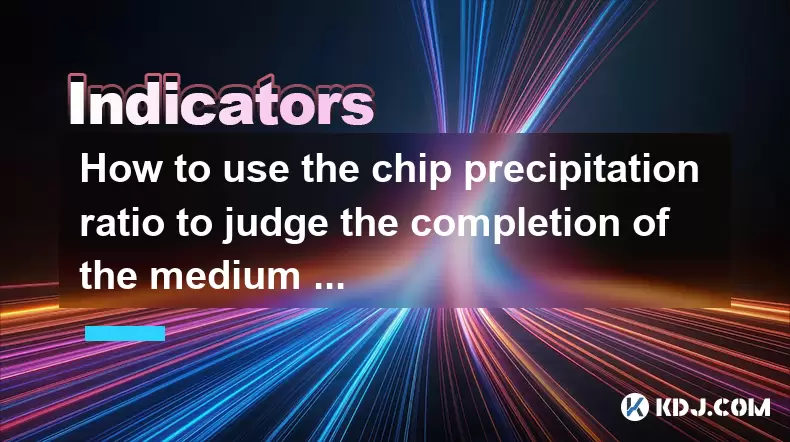
How to use the chip precipitation ratio to judge the completion of the medium and long-term bottom construction?
Jun 04,2025 at 03:36am
The chip precipitation ratio is a crucial metric used by investors to assess the accumulation of chips (or shares) at different price levels over time. This ratio helps in understanding the distribution of chips and can be a powerful tool for determining the completion of medium and long-term bottom construction in the cryptocurrency market. By analyzin...
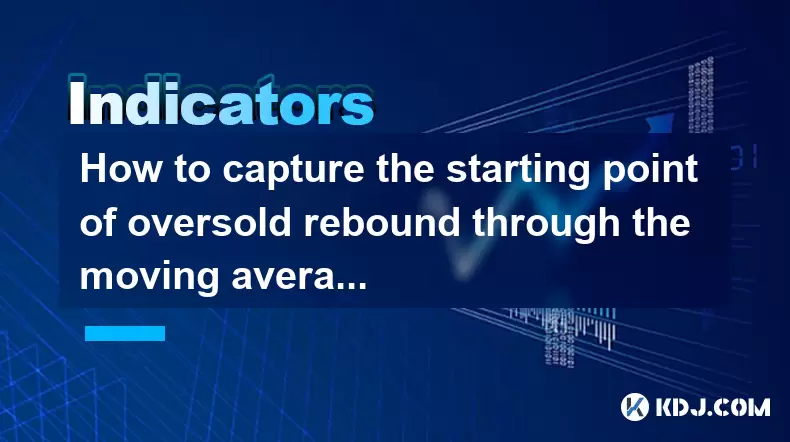
How to capture the starting point of oversold rebound through the moving average gravity reversal strategy?
Jun 04,2025 at 01:01pm
The moving average gravity reversal strategy is a sophisticated approach used by traders to identify potential entry points for buying cryptocurrencies when they are considered oversold. This strategy leverages the concept of moving averages to pinpoint moments when a cryptocurrency might be poised for a rebound. In this article, we will delve into the ...
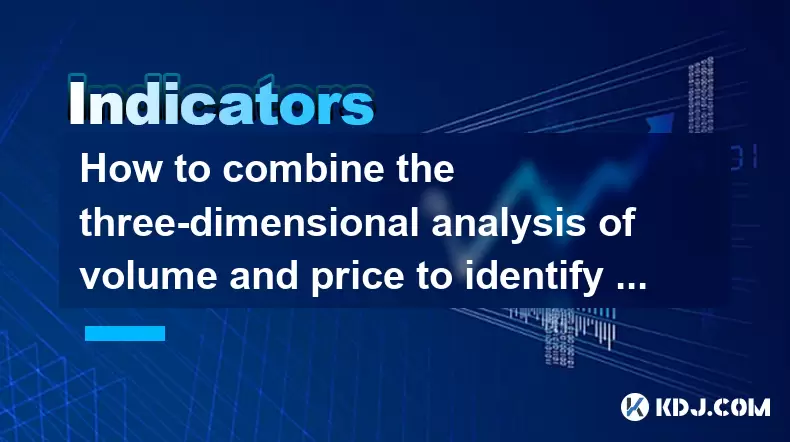
How to combine the three-dimensional analysis of volume and price to identify the golden buying point of breakthrough and retracement?
Jun 03,2025 at 11:42pm
In the dynamic world of cryptocurrencies, identifying the optimal buying points is crucial for maximizing profits and minimizing risks. One effective method to achieve this is by combining three-dimensional analysis of volume and price to pinpoint the golden buying points during breakouts and retracements. This article will delve into how to use this ap...
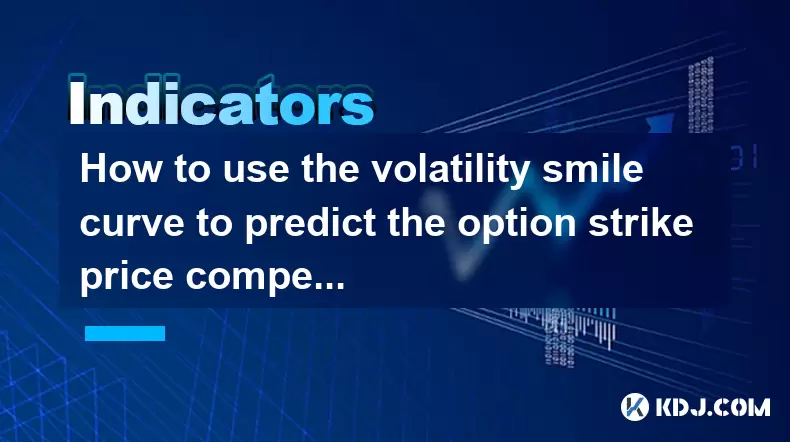
How to use the volatility smile curve to predict the option strike price competition area?
Jun 06,2025 at 01:01pm
The volatility smile curve is a graphical representation that shows the implied volatility of options across different strike prices for a given expiration date. It is called a 'smile' because the curve often takes the shape of a smile, with higher implied volatilities for options that are deep in-the-money or deep out-of-the-money, and lower implied vo...
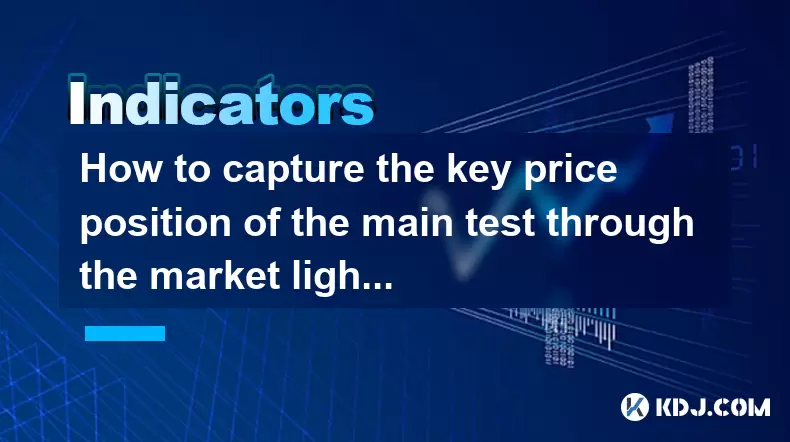
How to capture the key price position of the main test through the market lightning chart?
Jun 02,2025 at 06:07pm
Introduction to Market Lightning ChartThe market lightning chart is a powerful tool used by cryptocurrency traders to visualize price movements and identify key price positions. This chart type provides a detailed view of market activity, allowing traders to spot trends, reversals, and other significant price levels quickly. By understanding how to use ...
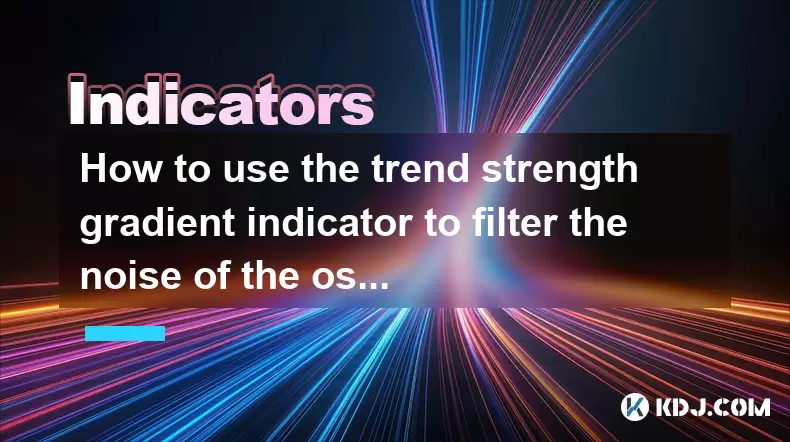
How to use the trend strength gradient indicator to filter the noise of the oscillating market?
Jun 06,2025 at 06:15pm
The trend strength gradient indicator is a powerful tool used by cryptocurrency traders to analyze market trends and filter out the noise that often accompanies oscillating markets. This indicator helps traders identify the strength of a trend, enabling them to make more informed decisions. In this article, we will explore how to effectively use the tre...

How to use the chip precipitation ratio to judge the completion of the medium and long-term bottom construction?
Jun 04,2025 at 03:36am
The chip precipitation ratio is a crucial metric used by investors to assess the accumulation of chips (or shares) at different price levels over time. This ratio helps in understanding the distribution of chips and can be a powerful tool for determining the completion of medium and long-term bottom construction in the cryptocurrency market. By analyzin...

How to capture the starting point of oversold rebound through the moving average gravity reversal strategy?
Jun 04,2025 at 01:01pm
The moving average gravity reversal strategy is a sophisticated approach used by traders to identify potential entry points for buying cryptocurrencies when they are considered oversold. This strategy leverages the concept of moving averages to pinpoint moments when a cryptocurrency might be poised for a rebound. In this article, we will delve into the ...

How to combine the three-dimensional analysis of volume and price to identify the golden buying point of breakthrough and retracement?
Jun 03,2025 at 11:42pm
In the dynamic world of cryptocurrencies, identifying the optimal buying points is crucial for maximizing profits and minimizing risks. One effective method to achieve this is by combining three-dimensional analysis of volume and price to pinpoint the golden buying points during breakouts and retracements. This article will delve into how to use this ap...

How to use the volatility smile curve to predict the option strike price competition area?
Jun 06,2025 at 01:01pm
The volatility smile curve is a graphical representation that shows the implied volatility of options across different strike prices for a given expiration date. It is called a 'smile' because the curve often takes the shape of a smile, with higher implied volatilities for options that are deep in-the-money or deep out-of-the-money, and lower implied vo...

How to capture the key price position of the main test through the market lightning chart?
Jun 02,2025 at 06:07pm
Introduction to Market Lightning ChartThe market lightning chart is a powerful tool used by cryptocurrency traders to visualize price movements and identify key price positions. This chart type provides a detailed view of market activity, allowing traders to spot trends, reversals, and other significant price levels quickly. By understanding how to use ...

How to use the trend strength gradient indicator to filter the noise of the oscillating market?
Jun 06,2025 at 06:15pm
The trend strength gradient indicator is a powerful tool used by cryptocurrency traders to analyze market trends and filter out the noise that often accompanies oscillating markets. This indicator helps traders identify the strength of a trend, enabling them to make more informed decisions. In this article, we will explore how to effectively use the tre...
See all articles

























































































